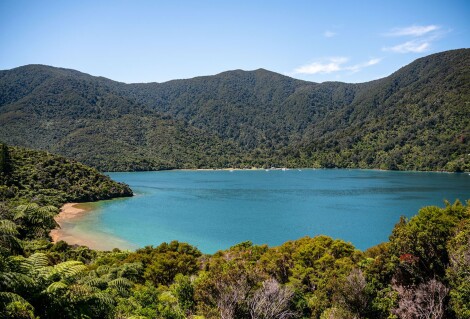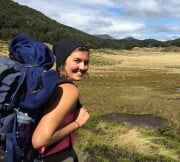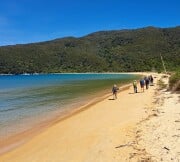The Marlborough Sounds are a massive labyrinth of sunken river-cut valleys now flooded by the ocean. Equivalent to one of our bigger National Parks in size, this stunning area is actually a potpourri of crown wilderness, private land, and scenic reserves, all with differing types of conservation protection. Bays, islands, and delicate peninsulas extend this north-eastern tip of New Zealand’s South Island out towards the Cook Strait. The further out you go, the more remote and wild it becomes, and it receives far fewer visitors than Abel Tasman National Park, just a few hours' drive away.
In the south west quadrant of the Sounds lies the coastal town of Picton. Located in a calm harbour of Queen Charlotte sound, it has a chilled waterfront scene. Excellent eateries and accommodation. This is the hub for tourism in the region and the providore for the people who live, work, and recreate in this extensive water based landscape.
The other principal channels are Kenepuru and Pelorus Sounds (north and west).
Hike or mountainbike the 70 km Queen Charlotte Track. The trail winds north eastwards from the Picton area into the Marlborough Sounds, with each successive ridge crest revealing another picturesque cove. It takes 4-5 days, choose to camp or stay in huts or nice, fancy lodges.
Kayaking, in our opinion, is one of the best ways to experience the Marlborough Sounds. Discover coves away from the trails, silently glide across glassy water, and listen to the forest sounds beside you. This sheltered environment provides ideal conditions for spotting the diverse marine life too. Keep an eye out for rare Hector’s dolphins and curious New Zealand fur seals.
Or opt for a birds eye view of this uniquely kiwi landscape with a scenic flight (flying from Wellington to Nelson/Picton also crosses this beautiful green-blue landscape of islets, isles, and inlets).
The Marlborough Sounds is also home to several predator-free sanctuaries, where conservation efforts have restored native bird populations and revitalised ecosystems. Islands like Motuara and Blumine are now abound with species like the saddleback, little blue penguin, and the critically endangered, orange-fronted parakeet.
 4 Days
4 Days





